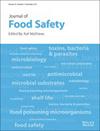Walking Control of Humanoid Robots on Uneven Ground Using Fuzzy Algorithm
Journal of Rapid Methods and Automation in Microbiology
Pub Date : 2019-01-01
DOI:10.4018/978-1-5225-1639-2.CH014
引用次数: 1
Abstract
Walking control of humanoid robots is a challenging issue. In this chapter, a method for modeling humanoid robots is presented considering the human being indices such as DOFs, mass and the moment of inertia of the segments. In the next step, a walking pattern on the flat ground is generated and the robot motion is simulated in the MSC. Visual Nastran 4D™ software. ZMP trajectory of the simulated humanoid robot in walking cycle has been obtained. An uneven ground is generated in the software, where the robot falls down during the motion. A fuzzy algorithm is employed to balance the robot; input is defined as the differences between the projections of ZMP in flat and uneven ground and output is a compensative signal to make the robot follow the flat ground ZMP pattern to refuse the robot falling. Output signal is distributed in different joints to make faster and more effective compensation. Although the type of uneven ground can be important, but the robot could successfully pass the designed uneven ground in MSC.Visual Nastran 4D.基于模糊算法的仿人机器人不平整地面行走控制
人形机器人的行走控制是一个具有挑战性的问题。在本章中,提出了一种考虑人的指标,如自由度、质量和关节的转动惯量的仿人机器人建模方法。下一步,在平地上生成行走模式,并在MSC中模拟机器人的运动。Visual Nastran 4D™软件。仿真得到了仿人机器人行走周期的ZMP轨迹。在软件中产生一个不平坦的地面,机器人在运动过程中会在那里摔倒。采用模糊算法对机器人进行平衡;输入定义为平坦地面和不平坦地面上ZMP投影的差值,输出是补偿信号,使机器人遵循平坦地面ZMP模式,拒绝机器人坠落。输出信号分布在不同的接头,使补偿更快、更有效。虽然不平整地面的类型可能很重要,但机器人可以成功地通过MSC设计的不平整地面。视觉Nastran 4D。
本文章由计算机程序翻译,如有差异,请以英文原文为准。
求助全文
约1分钟内获得全文
求助全文

 求助内容:
求助内容: 应助结果提醒方式:
应助结果提醒方式:


